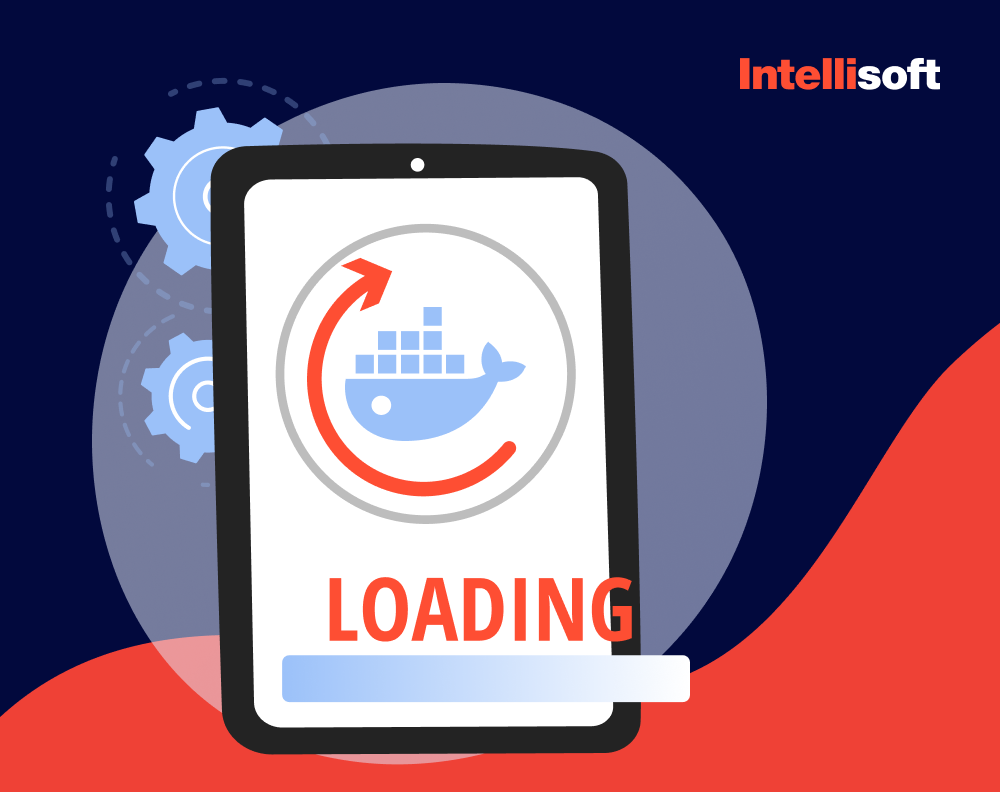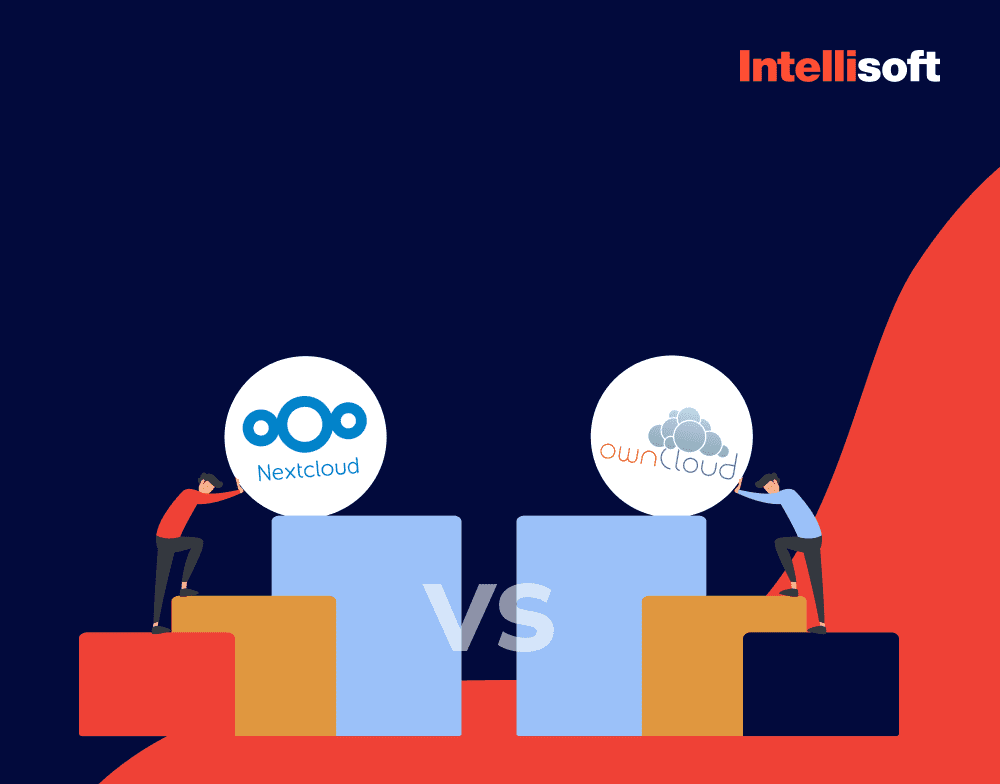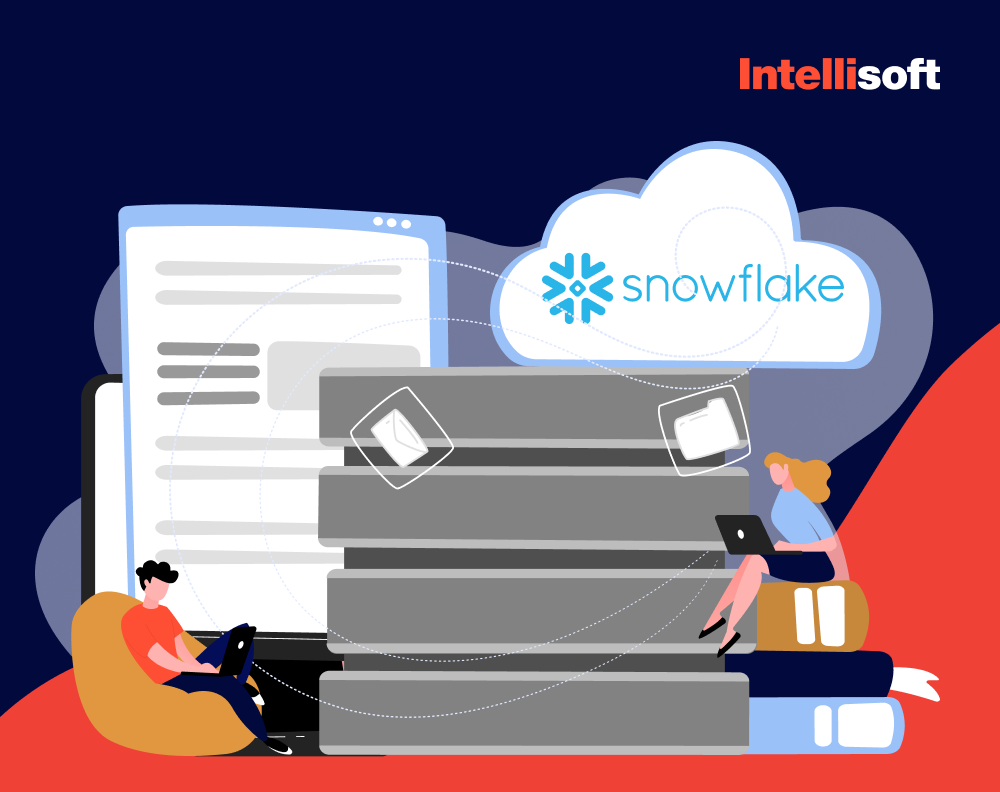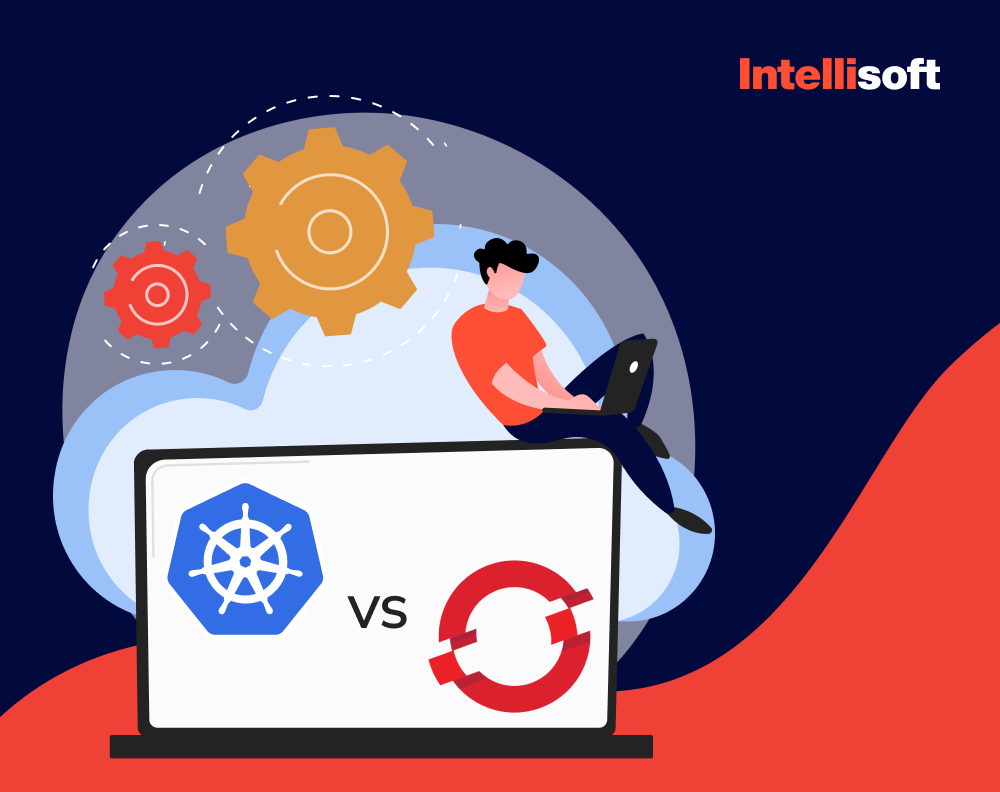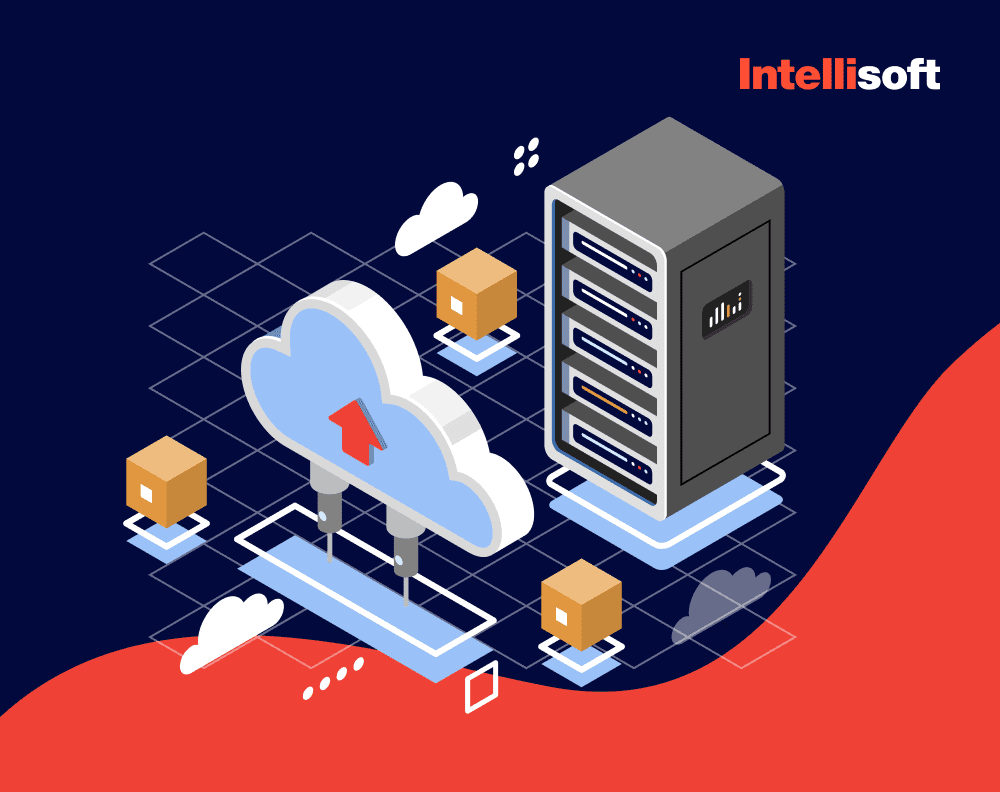Looking For Big Data Analysts?
Big data is often described as the new oil of the 21st century, unleashing a tidal wave of transformative power upon businesses. In the era of cutthroat competition, all companies collect, store, and analyze data to transform their processes and make more informed decisions. Big data can even be called the lifeblood of modern companies.
Unfortunately, data is often stored in different departments, making it tough to analyze it effectively and have a comprehensive view of one’s business state. One of the ways to solve this issue and support a digital transformation journey is to implement enterprise data warehouse software (EDW). An EDW can collect data from multiple sources, functioning as a centralized data depository for analytical and reporting purposes. With an EDW, you can get jaw-dropping results and skyrocket your business.
At IntelliSoft, we have an astonishing arsenal of expertise in developing custom data analysis solutions for our clients. We specialize in data analytics counseling modernization, managed data analysis, custom development, and data analytics implementation. The IntelliSoft team has aided our clients with different elements of data science, big data maintenance and safety control, data visualization, and enterprise data analytics. Now, we’re ready to help you get out of the tangled maze of data warehousing and get the most out of it!
In this article, we will talk about what EDW is and what makes it different from a data warehouse, data lake, and data mart. Moreover, you’ll learn about different schemas of an enterprise data warehouse, data warehouse management, and the main steps of data warehouse development. Finally, we will review the benefits of data warehouse for any business so that you can find the right solution for your business.
Table of Contents
What is enterprise data warehouse?
Imagine a gigantic warehouse that stores all the data collected through the years in one place, covering all departments, teams, and data sources available to an enterprise. That is what an enterprise data warehouse (EDW) is. An EDW is a central depository of big data, collecting information from CRMs, ERPs, flat files, financial software, and physical sources.
In other words, it is a database of all databases, a mastermind, and the biggest depository of data available for businesses. It contains vital information about an entire business’s state, underlining a simple database that captures only a specific type of information.
When it comes to the main benefits of a data warehouse, an EDW allows businesses of all sizes to manage expansive amounts of big data without using multiple databases, making the process snappy and less prone to errors. For example, it is a great solution for storing data for business intelligence (BI). BI allows companies to transform raw data into valuable insights.
Components of an EDW

An EDW is a multidimensional system comprising several elements. Let’s take a look at them and their functionality:
- Data sources: The first component is all the sources which raw data originates from. These include IoT systems, SQL databases, spreadsheets, and more.
- Ingestion layer: Next, the data is pulled from its source and delivered to the warehouse. This is done with the help of ETL (extract, transform, and load) and ELT (extract, load, and transform) tools. The main difference between the two tools is the order in which data is moved to the storage system. ELT is a more modern approach than ETL because the transformations are done inside a warehouse.
- Staging area (optional): The staging area is only present in ETL. It is the place where data is transformed before heading to EDW. It gets cleansed here, split, joined, and converted into a unified format. The format depends on the model of the warehouse used by a company.
- Storage layer: This is when the data is loaded into the storage space. If an ELT approach is used, the data is still transforming during this stage. Still, in the storage layer, the data takes on its final form and is loaded into the final models.
- Metadata module: Metadata explains the data stored in an EDW. It gives specific hints to the administrator and users about the domains/subjects of the data. For example, it can be business meta (about the sales region) or more technical meta (about the initial source). A manager manages metadata, and it is stored separately from all the other data. It is possible to build a new layer to store metadata, like a data fabric layer.
- Data marts (optional): Data marts are small subsections that are built for specific business functions or users. It is often the case that there are data marts for the marketing or financial departments, but their use is optional.
- Presentation layer: This layer provides access to the data stored in an EDW. It is also called a BI interface that visualizes data, presents it in charts or dashboards, and helps with business reporting.
6 Business Needs That Require an EDW
Almost all businesses can get guaranteed benefits from an EDW. Let’s take a look at the main business needs that require the use of an enterprise data warehouse and the benefits of a data warehouse.
Real-time access to data
One of the benefits of a data warehouse is the use of a modern extract-load-transform (ELT) approach instead of the extract-transform-load (ETL) approach. It allows accessing data quickly in real time. It makes data more viewable, easier to access, and faster to analyze.
Tracking and ensuring data compliance
With an EDW, data customers can audit and vet data sources directly. It also allows for finding errors quickly and ensuring compliance with the EU’s General Protection Regulation (GDPR).
Understanding your customers
EDWs allow companies to collect data about customers, including their interests, purchase behavior, and the decisions they make along the way. As a result, this data helps improve future marketing campaigns, improve revenue growth, and positively influence the brand image. An EDW is also used for predictive analytics to enable forecasting and scenario modeling.
Empowerment of less technical team members
Among the benefits of a data warehouse is that it can benefit non-technical employees from all departments, including finance, HR, marketing, and more. The data stored in EDW allows them to make more informed decisions, identify new KPIs, and plan future campaigns accordingly.
Adherence to compliance
EDW also allows companies to quickly find errors and resolve them, helping them comply with regulatory requirements like GDPR and CCPA. This is especially important for healthcare and finance companies, where adherence to regulations is the top priority.
Consolidating data into a single repository
Adding to the benefits of a data warehouse, modern EDWs allow companies to collect data from multiple sources, regions, and cloud providers and store it in a single repository.
Types of enterprise data warehouses
Enterprise data warehouses differ according to specific business types and their needs. Depending on the type and amount of data stored, the analytical complexity, and the company’s budget, there are three main options to choose from.
- On-premises data warehouse
This is a classic variant of a data warehouse. It has local hardware and software capabilities; all data is stored on physical servers, and there is no need to set up data integration tools between different databases. Usually, an on-premise EDW is connected with data sources via APIs, and the data is constantly collected and transformed.
This variant of EDW makes it easier to manage data flow and create reports faster when compared to a virtual EDW. However, it is more expensive because you need both hardware and software, and you need to hire a team of data engineers and DevOps specialists.
When to use: This type of EDW is a great choice for companies that prioritize security and the ability to scale up and down easily.
- Cloud data warehouse
A cloud data warehouse is an alternative to the on-premises one. Usually, it is a service provided by a vendor with its own software and hardware infrastructure. Thus, companies rent cloud resources from the vendor and gain access to the data warehouse online.
The main advantage of a cloud data warehouse is that it is less costly than the classic option because there’s no need to set up an entire infrastructure. Moreover, it is uncomplicated to scale up and down as a company’s requirements change. Its infrastructure is usually maintained for a specific business, so you don’t have to worry about its setting up and management.
However, a cloud data warehouse can be less secure than an on-premises option, depending on the choice of the vendor. Always ensure that your vendor can be trusted to avoid breaches.
When to use: This is an excellent choice for organizations of any size which need everything set up for them, including DW maintenance and BI support.
- Virtual data warehouse
A virtual data warehouse is an alternative to a classic warehouse. It consists of multiple databases connected virtually, working as a single system.
In a virtual warehouse, all the data stays in its sources and can be retrieved with the help of analytical tools. Thus, it does not require any additional infrastructure. However, it has a number of drawbacks, such as that multiple databases require constant maintenance and higher costs.
Moreover, a visual data warehouse requires transformation software to make data digestible for users and reporting tools.
When to use: If you have a business with raw data in a standardized format that does not require complex analysis. It is also a great choice for companies that do not use BI on a constant basis.
Enterprise data warehouse schemas
In an EDW, a schema defines the organization of database entities, such as fact tables and dimension tables. There are three main types of schemas:
- Star schema

In a star schema, one fact table is in the center, and there are several associated dimension tables around it. This structure resembles the star, hence the name. It is the simplest type of data warehouse schema.
A fact table in this schema contains primary business information, shorted to facts. For example, it can be a table named SALES or FINANCE, including essential information from these departments.
Next, the dimension tables include traits about the data mentioned in a fact table. For example,
it can be information about items sold, their price, category, date, address of the buyer, etc.
A star schema is excellent for reporting because it simplifies the ordinary business reporting logic. Moreover, it has a straightforward join logic compared to other schemas.
- Snowflake schema

a star schema with new dimensions. For example, a dimension table PRODUCT can be extended into a new individual table called VARIANT. These new dimension tables are not linked to the fact table.
A snowflake schema reduces data redundancy and improves data integrity. Data redundancy is reduced because the dimension tables are grouped into related tables, making the data more visual and coherent. Moreover, it consumes less space as a result.
However, nothing is perfect, and this schema also has some drawbacks. For instance, it is more complex to query than a star schema because you need to add more table joins. This can slow down the response time and use more resources.
- Galaxy schema
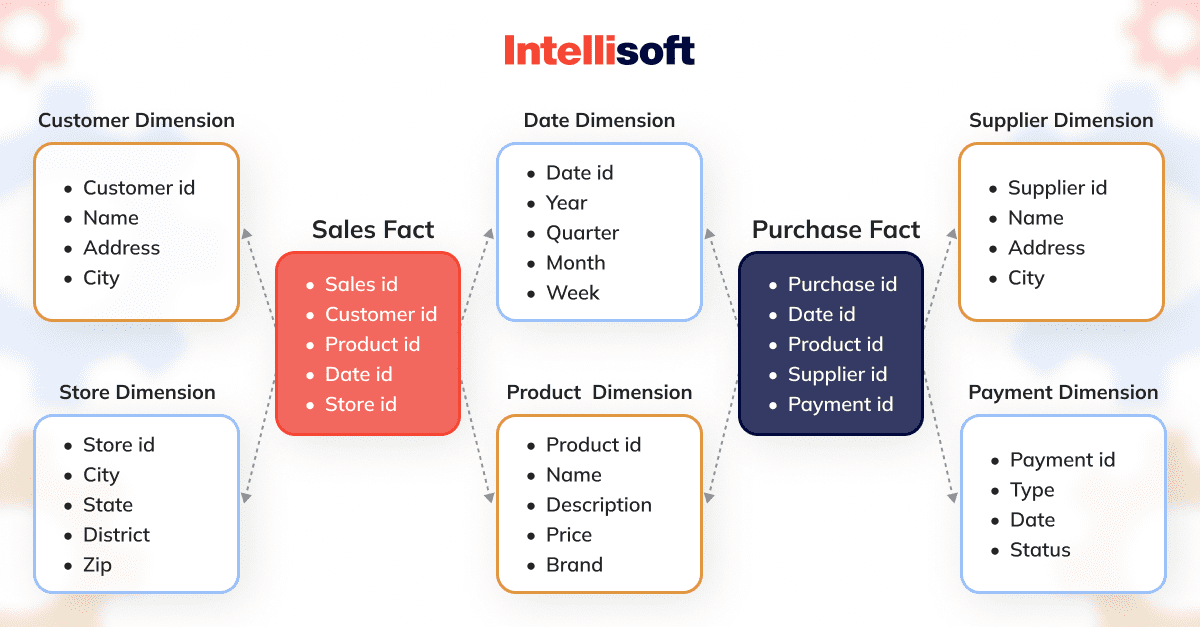
The name of this schema speaks for itself. It is the most complex and multidimensional data warehouse schema, as numerous fact tables are connected with shared dimensions tables. Essentially, it is a collection of star schemas that are interlinked and normalized.
A galaxy schema can seem colossally complex, but its design perfectly fits complex database systems. It helps eliminate redundancy almost completely and provides incredibly high data quality and accuracy.
How Much Will Your Project Cost?
If you need to deal with sophisticated requirements and aggregated fact tables, a galaxy schema is your perfect match. However, remember that its complexity can be challenging to maintain.
Enterprise data warehouse architecture
Data warehouses historically have a one- and two-tier architecture. Times have changed, and an enterprise data warehouse requires a more complex approach. Here’s what it consists of.
- Bottom tier
The bottom tier is where the data is stored, either in a relational database or a multidimensional database. All of this data is collected from different sources, but it has to pass the ETL process before it can be safely stored in the database. The data is transformed and cleaned, the duplicates are deleted, and the data types are changed.
- Middle tier
The next layer contains an online analytical processing (OLAP) server. You can use this system for discovery and analysis to process charts, reports, and predictions. OLAP systems have two different types: relational online analytical processing (ROLAP) and multidimensional online analytical processing (MOLAP).
- Top tier
The final stage contains the front-end layer or the user interface. It allows the users to connect to the database systems. Depending on the expected outcome, it can be a tool or an API call. For example, it can be a Data mining or a Reporting tool.
A user-friendly interface is the backbone of the EDW’s success, so ensure that all three tiers are developed cautiously, making them easy to use and intuitive.
Data Warehouse vs. Data Lake vs. Data Mart
If you have been reading about data warehouses, you’ve probably stumbled upon the terms “data lake” and “data mart.” What are they, and can they be used interchangeably? Let’s take a look at their comparison and decide.

Building a data warehouse
Here’s a little spoiler for you: building an enterprise data warehouse is not as daunting as it may seem. Luckily, it is a gradual process, and you don’t need to invest all the money you have at once. With the right development team and clear communication, you can avoid huge budget spending and errors along the way. Let’s take a look at the main steps you need to take to build a custom data warehouse for your business.
Step 1: Define business requirements
Everything starts with an idea and a list of requirements, no matter what you’re about to build. First, focus on your priorities. Why do you need a data warehouse in the first place? What are you expecting from it? For instance, you might need a highly-flexible data warehouse to be able to handle your changing requirements. Scalability should also be on your list if you expect your company to grow in the near future. If you can’t compile a list on your own, there is no need to worry; there are plenty of skilled solution architects who can help you with that.
Step 2: Analyze source data
The next step is making sure that your data warehouse isn’t loaded with tons of unnecessary data from random data sources that you don’t need. To ensure that this isn’t the case, define all relevant data sources that you will use. For example, you can collect data from CRMs, accounting packages, the time reporting system, etc.
Step 3: Build data models
Now that your business requirements are clear as day, it’s time to build an enterprise data model. This step helps visualize core business processes and see how your business entities interact with each other. There are three types of data models to build: conceptual, logical, and physical.
A conceptual data model helps you see how the main business entities are related to each other, and define your enterprise’s information needs. The only data shown in the conceptual data model is the entities that define specific data and their relationships. For instance, it can identify the relationships between customers, carriers, suppliers, products, orders, and manufacturers.
A logical data model adds details to the conceptual model. It provides more columns with attributes related to the entities, such as where the customers are from, where the product should be shipped, etc.
A physical data model has even more details, adding primary and foreign keys to the entities. A primary key is unique, and there can only be one in a table. A foreign key links two entities together. This model can also include the definition of new data structures for enhancing query performance.
Step 4: Build a data warehouse schema
Once you clearly define the models of your business processes, you can now turn your physical data model into a data warehousing schema. To help you decide which type of schema and method of generating to choose, you can use the services of a software architect. There’s no universal approach, so the choice will depend on your unique needs and business requirements. We have already covered the main schemas to choose from: the star schema, the snowflake schema, and the galaxy schema.
Step 5: Implementation of data warehouse architecture
The right choice of a data warehouse schema will make it easy to compose an enterprise data warehouse architecture. Remember to use the three-tier architecture that consists of the bottom, middle, and top tiers.
Related readings:
- What is Cloud Computing? Understanding the Basics, Services and Benefits
- Cloud Computing Scalability: What Is It and Why It’s Important?
- The Great Cloud Storage Debate: ownCloud vs Nextcloud – Which One Is Right for You?
- Docker and Microservices: The Future of Scalable and Resilient Application Development
- What Are the Security Risks of Cloud Computing? Threats & Solutions
Enterprise data warehousing technologies
There’s an astonishing number of tools and technologies that can be used for enterprise data warehouse development. It’s no wonder you may be confused by it and not know which technology to use. If you find yourself in a situation where you can’t decide on what technologies to use, don’t hesitate to consult experts in the field of warehousing, BI, and ETL.
Nowadays, cloud computing technologies have become a standard rather than an exception. Numerous cloud providers in the market are ready to assist you with data warehousing, providing you with computation space and power.
Among the cloud data warehouse products available these days, we recommend paying attention to these data warehouse examples:
- Amazon Redshift
- BigQuery
- Snowflake
and other tools we described in our previous article about Data Warehouse Tools.
How IntelliSoft Can Help?
At IntelliSoft, our extensive expertise in software, web, and cloud development has made us your loyal guide in the world of data warehousing. We are not just your regular team of developers. Once we start working together, we are your partners, supporters, and guides that assist with every step of the journey.
It may seem that there’s magic involved when it comes to our data analytics and warehousing services, but rest assured it’s really our knowledge and skills that help us create custom enterprise solutions that fit your business requirements like a glove.
Need Help With Software Development?
If you choose us as your development partner, you don’t need to worry about any aspect of the process. We will cover the development process from A to Z, helping you choose the right tech stack, data warehouse model, and architecture, and implement it seamlessly into your business environment. Our cooperation will let you experience all the benefits of a data warehouse in real life.
Conclusion
Enterprise data warehousing can seem like a tangled maze you’re too afraid to enter. Fear not, it’s worth taking a step forward and embarking on this exciting journey. Once you embrace the possibilities of data warehousing, you’ll forget about manual daunting tasks, be able to easily access your data at any time, and ensure that the data meets all regulatory compliances. It’s high time to conquer the wave of digital transformation and bring your business to a whole new level, and IntelliSoft is here to assist you with that, so don’t hesitate to contact us.
AboutKosta Mitrofanskiy
I have 25 years of hands-on experience in the IT and software development industry. During this period, I helped 50+ companies to gain a technological edge across different industries. I can help you with dedicated teams, hiring stand-alone developers, developing a product design and MVP for your healthcare, logistics, or IoT projects. If you have questions concerning our cooperation or need an NDA to sign, contact info@intellisoftware.net.


